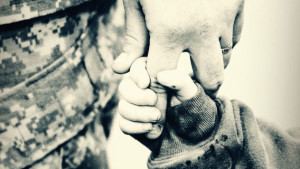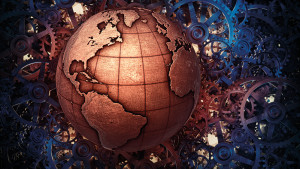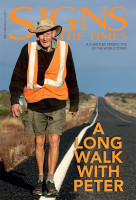A Dutch trading ship arrived at the Cape of southern Africa in February 1713. The crew was glad to make port after weeks at sea. They would enjoy fresh fruit, vegetables and meat. But their joy was tempered by the recent deaths at sea of several of the crew members from smallpox. Captain Johannes van Steeland was especially melancholy: his wife and four children, who had been travelling with him, were taken by the disease.
But worse was to come. The captain sent linen and clothes from the ship to a laundry run by a Dutch trading company. Three days later, half the workers in the laundry had succumbed to smallpox. Then white settlers began to fall sick with the disease. So many died that there were not enough coffins in which to bury them!
Then the infection hit the native Khoikhoi, who had no genetic resistance to smallpox. They died quickly and in frightful numbers. Their corpses were left littering the walking trails around the Cape where they had fallen. It seemed like a curse from heaven. When it was over, 90 per cent of the Khoikhoi had died.
Could such an event happen again? Is it possible that a new contagion such as Ebola could destroy nations and economies? And is any such outbreak predicted in the Bible, as opposed to Hollywood?
Before looking at what the Bible says, let me introduce the view of the scientific community. The University of Oxford’s Global Priorities Project (GPP) has released a report on the greatest threats to the human population. This is not the report you would read if you were looking at making a positive start to your day. It covers all the ways that 10 per cent or more of us could be wiped off the face of the earth: nuclear war, global warming, the eruption of a super volcano and the possibility of an asteroid impact. The authors also point out the possibility of artificial intelligence disrupting the planet (which tells me nothing specific except that they’ve probably watched all of the Terminator movies).
After weighing the odds of all these disasters actually happening, the GPP scientists believe that the event that we should most worry about is a global pandemic. They support their conclusion by pointing out that we’ve had 10 influenza pandemics in the past 300 years. The Spanish flu outbreak of 1918 killed five per cent of the world’s population, leaving more bodies in its wake than all of World War I that just preceded it.
Forty per cent of us can expect a diagnosis of cancer in our lifetimes. It’s a rare home that avoids it.
So the chances of an apocalyptic virus spreading over the earth are uncomfortably high according to science.
Now, what does the Bible say? Do prophecies warn us of an end-time outbreak of disease?
There are some prophetic texts that mention “pestilence”—a word that refers to a widespread disease that affects a large number of people. When the disciples asked Jesus what signs would announce the end of time, He answered, “Nation will rise against nation, and kingdom against kingdom. And there will be famines, pestilences and earthquakes in various places” (Matthew 24:7, NKJV, italics added).1
Then, in the last book of the Bible, we read a description of four horsemen. John describes a white horse, a red horse and a black horse. Then he says, “I looked, and behold, an ashen horse; and he who sat on it had the name Death; and Hades was following with him. Authority was given to them over a fourth of the earth, to kill with sword and with famine and with pestilence” (Revelation 6:8, NASB, italics added).2
Both passages suggest that the end of the world will look like the movie Contagion, only with less-attractive people. So we have that to look forward to. Or do we? Maybe these prophecies have already been fulfilled.
Because the truth is, we’ve already seen pandemics of apocalyptic proportions. In the year AD 541, grain ships from Egypt arrived in Constantinople with stowaway rats. The rats carried the bubonic plague, which began to cut through the Roman Empire like a scythe. The historian Procopius records that 10,000 people were dying in Constantinople every day. There was no place to bury the dead, and often there were no funeral rites. He wrote that bodies were stacked in the open till the city smelled like death.
One estimate is that a quarter of those living in the Eastern Mediterranean were wiped out. That certainly sounds like a fulfilment of the prophecy of the four horsemen, which, you remember, were given power over a quarter of the earth.
But 541 was obviously neither the end of the world nor of time. Eight hundred years later, the plague again broke out in Europe, killing one-third or more of its estimated population. In the city of Paris, the Black Death took one victim for every resident it left alive. In the Italian city of Sienna, the records of Agnolo di Tura “observed that no bells tolled and nobody wept no matter what his loss because almost everyone expected death.” The citizens of the city believed they were seeing the end of the world.
But it was not the end.

Then there was the Spanish flu, and in living memory HIV/AIDS. In 2015, we worried about Ebola escaping Africa, and in 2016 the Zika virus was making headlines. It’s hard to hold up these contemporary diseases as signs of the end when we compare them to the Black Death of the Middle Ages—a pandemic of such epic size that whole towns disappeared and people lost every family member in their home.
We need enough humility to recognise that the diseases that trouble us today are probably not proof of the apocalypse any more than sweat stains on your T-shirt are proof of global warming. Humanity has suffered worse in the past. And worse may come in the future.
In fact, worse may come in a very personal way. It is almost certain that you will be faced with disease in the years ahead. When it affects yourself or a loved one, it will seem to you as troubling as all the plagues of history. Forty per cent of us can expect a diagnosis of cancer in our lifetimes. It’s a rare home that avoids it. If you face this pestilence or another dangerous illness, will you be ready? Do you have a relationship with God that’s close enough and strong enough to carry you through the times of anxiety and despair?
In the same way that disease is predicted for the end of the world, it’s expected at the end of every life. Whether it’s a global pandemic or a personal illness, the best source of hope and peace is the same: the gospel, the good news of salvation through Him.
1. Bible verses marked NKJV are taken from the New King James Version®. Copyright © 1982 by Thomas Nelson, Inc. Used with permission. All rights reserved.
2. Bible verses marked NASB are taken from the NEW AMERICAN STANDARD BIBLE®, Copyright © 1960,1962, 1963,1968,1971,1972,1973,1975,1977,1995 by The Lockman Foundation. Used with permission.






